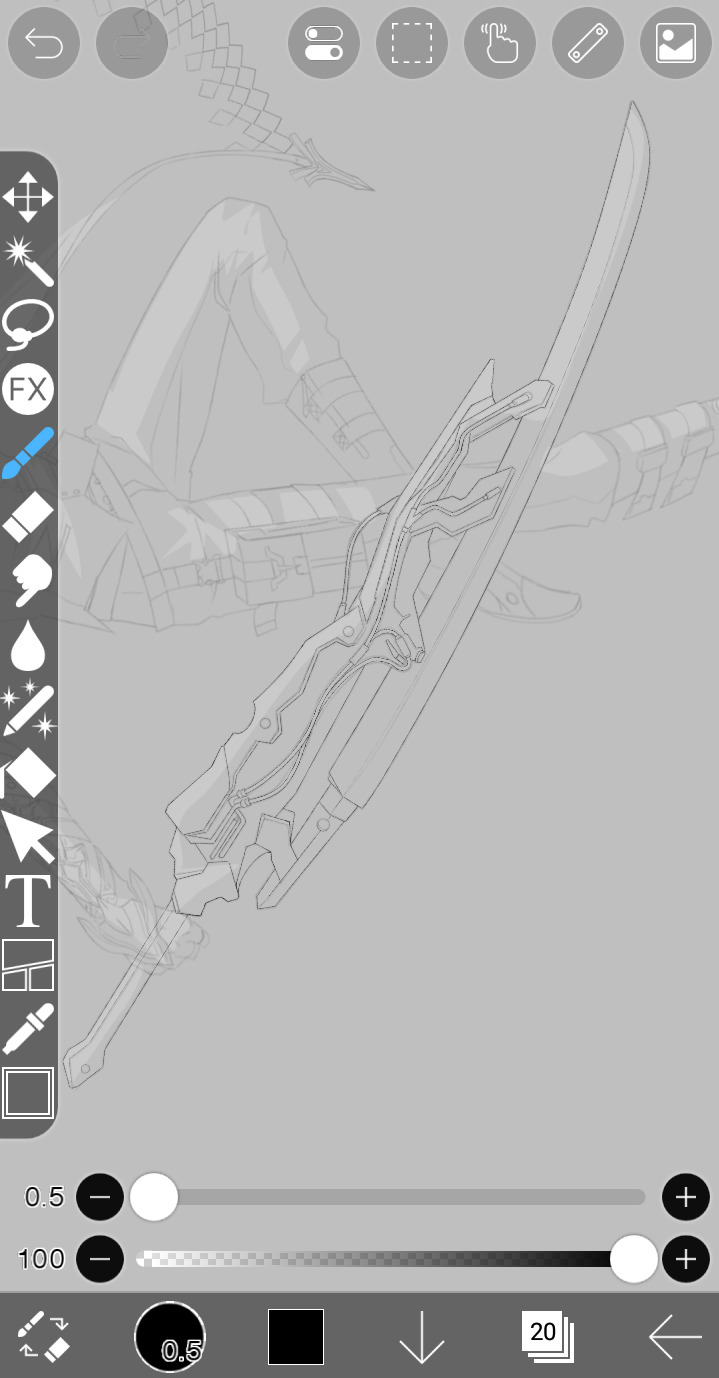#Sample code
Explore tagged Tumblr posts
Text
Programming Embedded Systems (with C and GNU Development Tools)
[Programming Embedded Systems (with C and GNU Development Tools). By Michael Barr & Anthony J Massa. 2nd Edition, 1 October 2006. Publisher: O'Reilly Media. Paperback: 301 pages, Dimensions: 17.78 x 1.98 x 23.34 cm. ISBN: 978-0-596-00983-0]
In the past 15 months or so I elected to expand my personal and professional skill set to include working with small computing systems, sometimes referred to as microcontrollers. These devices have become virtually omnipresent, in everything from automobiles and bar-code scanners to toasters and doorbells. If you operate a late-model vehicle, for instance, you may have as many as 70 (!) of these devices in the car controlling everything from the fuel mixture to emissions to anti-lock brakes and collision avoidance sensing.
I was interested in moving into this arena as part of my career, as there were many openings for people with a strong understanding of the imperatives attendant on both the software and hardware of embedded systems. I knew a bit about the electronics side of things and I have done software development of one sort or another most of my 40+ years as a professional, but this arena poses unique challenges and opportunities. I knew I needed to do some specialized self-teaching, and this book seemed like a great place to start.
To start with, what exactly is an embedded system?
As the name implies, it is a system - in this case a miniature computing device - that is a component of a larger framework. This larger framework can take on myriad forms. Some of the largest such frameworks are satellite networks. The embedded system comprises hardware - a central processing unit, or CPU, along with some (minimal) on-board memory and one or more electrical interfaces (e.g. a USB or RJ45 jack) through which it can communicate with the outside world.
Unlike the computers most of us are familiar with, such as Windows or MacOS-based laptops or Linux servers, these devices often do not have an operating system (WIndows, MacOS and Linux are all operating systems) that performs many of the low-level functions needed to keep the device running and useful.
This keeps the device flexible in terms of how it can be used, but at the expense of more detailed and subtle development and maintenance requirements. Thus, the "software" on an embedded system may be a very small bit of computer code that simply turns on the interfaces electrically and then waits for something to happen.
Programming software for these systems is intriguing but fraught with issues that an ordinary computer user never sees.
For example, given that the memory and interface resources on these devices tend to be rather modest, it's necessary for the programmer to take care of any bookkeeping that is necessary to keep the basic functions from colliding. If one of the interfaces is used to provide a scanned barcode to a waiting receiver, it must pass that information through some on-board memory first.
The embedded software designer needs to be sure that this information can't be corrupted, or "clobbered", by a competing task that might be, for instance, putting the scanning laser into sleep mode to save power. Moreover, there are cases where the same locations in memory need to be shared by tasks as a part of getting work done.
But what happens if one task is trying to write data to a specific memory location while another task is trying to read from it? Is there always a specific order in which this happens? What happens if either operation is incomplete for some reason? Will the device recover and continue to operate, or will it lock up? The aforementioned are but a tiny set of examples that the developer must bear in mind.
Messrs Barr and Massa have many decades of experience between the two of them in just these kinds of environments. I was delighted to see just how easy this book is to read and how thoroughly they cover all of the issues that accompany such a software development enterprise. They are careful to create and explain examples that use commonly-available development kits (I use an STM32 ARM Cortex-M Development Board myself; there is a photo of one such system below) and free or nearly-free software tools to break down the barriers to entry in this field.

This book is really as much about operating system design as it is about microcontroller software development; if one is interested in what nearly every operating system must do, this volume talks all about it.
Above and beyond this, it is a wealth of anecdotes, sample code, and general wisdom that will really ease the novice into this exciting world of programming and small-device control.
I highly recommend it to anyone who wants to get down on the bare metal with computers. It is necessary to be at least familiar with the C programming language (almost all of the examples are coded in C) and it would be very helpful to have worked with at least one Assembly language as well. Beyond that, the only requirement for getting the most out of the book is a willingness to experiment and be delighted.


Image Credits (from above down; with thanks to copyright owners): (1) STM32 ARM Cortex-M Development Board © Copyright Owner, date unknown (2) Book Cover © O'Reilly Media 11 October 2006 (3) Michael Barr © Barr Group 2012-2025. (Anthony J Massa, no photograph found)
Kevin Gillette
Words Across Time
4 February 2025
wordsacrosstime
#Words Across Time#Kevin Gillette#wordsacrosstime#February 2025#Michael Barr#Anthony Massa#O'Reilly Media#Embedded Systems#C#Satellite Networks#Electrical Interfaces#MacOS#Linux#Flexible#Computer Code#Barcode#Scanning Laser#Memory Location#STM32#Microcontrollers#Anecdotes#Assembly Language#Sample Code#General Wisdom#Computers
0 notes
Text





hi I'm opening emergency commissions for the time being
EDIT: no longer an emergency situation! but I'll be keeping my sheet at these discounted prices for the time being! 🫶
no slot limit for now, so please be patient with me 🙏 dms are open if you're interested!
ko-fi donations are also welcome ☕
any form of support is greatly appreciated, thank you so much!
sketch samples and other details under the cut ↓
sketch samples!



my usual terms of service still apply. price may increase depending on complexity and details but not by too much. :>
feel free to dm as well if there's anything you have questions about.
thank you!! 🙏

#sorry for the fandom tags but I'll include the ones that are shown as samples ;;w;;#death note#idolish7#your turn to die#danganronpa#rain code#good omens#commissions#artists on tumblr#commissions sheet#commissions open#open commissions#art commissions#drawing commissions#elle draws
80 notes
·
View notes
Text
#lotr#lord of the rings#lotr polls#middle earth polls#tolkien#middle earth geography#middle earth... ecology??#I've always read ithilien as mediterranean woodland-coded#but I'm wondering what other people think#let me know your thoughts!#this may range into headcanon territory and that's perfectly alright with me#but i'm guessing some of you have thought about this as well#reblog if you please for a wider sample size#and tell me your thoughts! :)
6 notes
·
View notes
Note
do you have any favorite perfume brands that are >$100?
prices vary based on bottle size and whatever location you’re ordering from, but for the most part these are >$100


tried including brands that ik ship internationally too btw. even if the brands don’t have intl shipping, their perfumes may be available on other distribution sites…just look it up🫶��
#not an exhaustive list at all but these are all the ones I came up with before I got tired of typing ahdjsk#can’t say these are ‘faves’ but I’ve either sampled some or heard good things from ppl I trust & have good taste#also about all of these brands have discount codes & discovery sets/samples on their websites. I always get those when trying new brands#esp since I can’t commit to a perfume that easily and I’m not trying to buy something I’m not obsessed with lol. okay I’m done beijos!#answered#fragtag
6 notes
·
View notes
Text

I’m doing something new for the rain code vampire hunter au, and it’s several pages long
This will definitely take a lot of time cause I also need to work for the zine, as well as on the arts that I have planned for some certain dates
#raincode vampire hunters au#rain code vampire hunters au#raincode au#rain code#raincode#master detective archives: rain code#mda:rc#mdarc#art wip#update#sample#yuma kokohead#shinigami#digital sketch#digital art
26 notes
·
View notes
Text
Day 19 of Fubuki

#i have a version without the watermark but iirc i got it from tumblr#so here we are with the “SAMPLE” on it to avoid someone yelling at me lol#daily fubuki clockford#fubuki clockford#rain code
10 notes
·
View notes
Text
chat i hate learning about physics calcs for basic movement and yet i cannot tear myself away from the samples
#pj talks#honestly i'm just kinda trying to like#keep track of all the variables going on in the samples i use to study and write down notes on what's going on#tbh best way to understand this stuff is probably to go code it myself
3 notes
·
View notes
Text
please god give me this job the experience is in the exact field and study i want please god if you fw me big g.o.d pleaseeee give me this job
i have my technical interview tomorrow but its more stressful because i asked if i would be writing code and he said no . this is a data science role what are you going to have to me do if not that ?!?!?!
#void.speaks#im tweaking out so bad#gets down on my hands and knees and begs#like assessing a case study is so vague#and theres gonna be multiple people on the call from my understanding#PLEASE IM SO SCARED#i want this job so bad#like. if its just a coding problem or building a sample predictive model im not gonna be good at it but its doable and i can study it#BUT IF NOT THAT WHAT? WHAT ELSE COULD I DO FOR A TECHNICAL INTERVIEW?#dude i shouldve fumbled this when i fucked up the first time for some insane reason i proceeded though#IM SO ANXIOUSHFDJHBSD
14 notes
·
View notes
Text

I'm not ready to do the lineart for the Bloodveil
12 notes
·
View notes
Text
if i hear another person talk about a retro game, system, or computer having a specific "soundfont" i think i'm gonna lose all will to live and spontaneously drop dead in front of them
#juney.txt#not how it works besties#older 8 bit machines generally had bespoke synthesizer chips that could output some square waves and some noise.#maybe some sine and saw waves if you were lucky#the megadrive had a yamaha chip in it but sega the bastards never gave devs proper instructions on how to use it#so a lotttt of devs just used the inbuilt settings on the development software they had#so a lot of megadrive games sound similar even though the system was technically capable of a lot more </3#the snes was allllll samples all day#any sounds you wanted you had to hand to the chip in advance#no inbuilt synths for you#anyway in all of these cases music data was just stored as raw computer instructions.#literally just code telling the audio hardware what to do each frame#no midis involved and simply slapping a soundfont someone made on a midi file someone else made does not constitute an ''8-bit'' cover
12 notes
·
View notes
Text
ok so this is like, incredibly ambitious for a first time project and im more posting this for posterity than anything BUT
im planning on practicing my 3d modeling skills by modeling the objects from pokemon games starting from the most simple and [hopefully] ending up with more complex things like furniture and plushies found in the games [provided i can find the refs for them] and i was sitting here just now thinking "now what can i do with these props in the meantime while i try to figure out how to make my own pokemon game?"
WELL....
what about making a simple room designer game that brings back the base camp mechanic that Gamefreak abandoned a long time ago and uses said props? Would anybody be interested in following a project like that? :3c
#pokemon#i have been conceptualizing so many games lately even though i do not know how to code yet#and i feel that a room designer like Happy Home would be a good one to focus on learning how to make#this obv will take time but im willing to put in the work#maya is an asshole but when you get it its really fun to use!#please reblog for larger sample size im really curious about this lol#rambling#tumblr polls
8 notes
·
View notes
Text
I spent so much time making this work skin but ngl I like how it looks
#I can't fix that one text#I just tried but who cares right#the conversation is just a sample I got to add their quirky typing traits#also ignore the date and the time cuz 18 PM. you can't just look at that. I don't know what happened to my brain#I also have another chat for the fbi agents cuz they have a blackberry and slightly more technologically advanced#if anyone wants this. I am afraid you'll cry your eyes out at the code because I put together different parts I found online#but I can share#personal
2 notes
·
View notes
Text
i absolutely love playing with the data visualizations on citizen dj and creating what is to other people apparently auditory sensory hell but to me is the correct amount of noise anything should make. please try it
#to create laz noise go to one of the graphs and drag your mouse around really fast so 1000 voices at once yell at you#mine#i've been going through all of their archived audio one by one and sampling all of them#im not researching i just wanna know what they have in there#the visualizations are great. they're these color coded maps of audio data. so different types of sounds will be grouped together and the#color coding makes it so you can see how they relate to eachother and flow. it's very interesting#and each visualization of each collection is so very unique
12 notes
·
View notes
Text
Who Really Cares was written about them and you CANNOT convince me otherwise fuck you

#mikejay#act like you never met me is sooo mike arizona coded#the samples of shitty raps they would watch on botw#safeword cause jay is a sex pest#loving machine....the gi love triangle#tv girl you cooked so hard
12 notes
·
View notes
Text
wait. super random question
any languages, btw!!
#writing some stuff for rui rn and realizing i have no idea how familiar the average person is with code#i had learned a lot in school but at the same time i took two ap computer science classes#so like. what do most people know? my sample pool is biased irl
12 notes
·
View notes
Text
Friendship ended with google sheets, now filofax is my best friend
#i’ve been tying to come up with a system for verb conjugations#like recording all the verbs i’ve encountered in spanish and their conjugations. just in present tense for now and then i will learn#past and future and any other cases or tenses i may need#and i did buy a dedicated language journal (which i’m really enjoying using. it has habit trackers; lots of space for notetaking and doing#textbook exercises; sections for vocab lists and to write out/give examples of grammar rules; journal prompts for writing#in your target language etc) but it only has 48 verb conjugation tables#i have already encountered 77 different verbs in some form or another and recorded their infinitives so that i can table them#even if i’m just focusing on the present tense right now i do not have enough space and i don’t want to clutter up the rest of my note pages#with just conjugation tables#so i needed a system and at first i was going to do a spreadsheet but then i was like realistically i will spend WAY too long on the layout#and i don’t think i’ll actually use it that much because google sheets is so fucking awkward on my phone#i’d have to pull my whole laptop out just to look at this spreadsheet. it won’t be fun. it’ll seem too much like hard work#so i thought okay. what do i actually want from a verb conjugation system. some form of organisation for sure. colour coding#the ability to move stuff around if i want to#so i’m just using my filofax and various pens#it’s a personal size filofax so i can fit two verbs per page plus a couple of sample sentences using the verbs#i am SO much more likely to grab this and use it; especially if i keep it with my main language journal#and i can always add new pages. or if i run out of space i can take out verbs i’m confident with now and replace with verbs i’m trying#to learn. (i’m starting with just the most essential verbs. since that’s the ones i’m usually finding anyway in A1 content)#i’m really happy with this idea tbh. i don’t know if i already said that#personal
4 notes
·
View notes